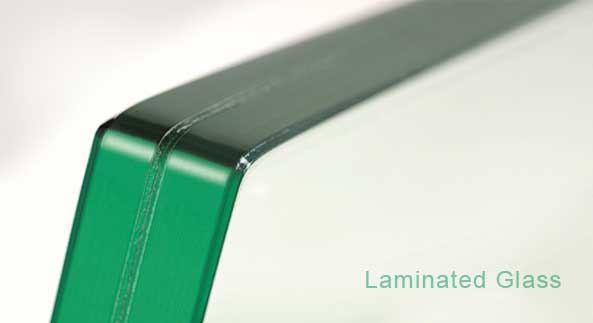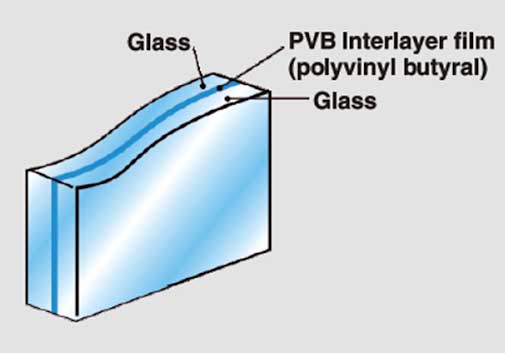Home » Blog » Laminated Safety Glass: Uses and Advantages
Posted on : 03-01-2022 Author : Krishna G Modi

Certainly, glass is an eminent building material used in making a myriad of structures, ranging right from floors to skywalks. However, despite its prominent evolution, a common wrong belief pervading in people is that glass can easily break, which can then cause critical injuries.
To get rid of this belief, manufacturers have come up with safety glass that is tough enough to endure heavy impact. One such glass is laminated glass.
Laminated glass is a layered glass featuring a laminated sheet existing as an adhesive in between two glass layers. The sheet is typically made using PolyVinyl Butyral (PVB) and helps n minimizing the risk of an injury if the glass breaks.

The number of layers can range from two to nine, with every two glass layers having a PVB sheet between them. The flexible PVB interlayer between two or more glass layers fits via the heat and pressure process. In this process, a chemical bond is generated between the PVB and glass layers. This bond is permanent and cojoins them to form a new glass panel.
Laminated glass is available in a myriad of thicknesses and is flexible enough to be created with the help of varying glass combinations or layers to trigger diverse features such as improved insulation or low emissions.
The thickness and vigorous quality of laminated glass result in the following advantages: • Better security due to high strength making it almost impossible to break the glass, which keeps force entry of burglars away. Even if it breaks, the interlayer glass upholds the strength due to which it is very hard to widen the gap.
• More safety as the breaking the glass is almost impossible and injury due to shards is almost negligible as there is no shattering upon breaking. If broken, laminated glass pieces bonds together to create a spider web pattern, which decreases the probability of an injury significantly.
• Strong enough to remain intact in case of volatile weather and sturdy enough to resist fire, both of which ordinary glass cannot. In case of an earthquake or fire, the resistant glass takes time to break, which is enough for the dwellers to escape.
• Reduced emissions, which means less frequent use of air conditioning.
• Less noise pollution by disrupting the audible waves when they pass through the thick glass.
• Diverse customization options in terms of colors, tints, and shapes.
Although transparent, laminated glass acts as a robust and strong layer to provide more security and safety than traditional glass. Thus, it is used in a myriad of applications, which are as follows:
• Automobile windshields
• Doors and windows of shops as well as commercial and residential buildings that need
protection against earthquakes, fires, and other disasters
• Balcony railings for its aesthetic appeal and impact resistance
• Infinity swimming pools (boundary-less pools)
• Skylights due to resistance to temperature changes
• Curtain walls
• Glass roofs, stairs, floors, and facades
• Exterior glass canopies
• Aquariums or animal arenas
• Protective enclosures for valuables such as jewellery, art pieces, and money
Both laminated and toughened glasses are used for security and safety purposes. However, they differ in terms of a few features, which are as follows:
• Manufacturing: Laminated glass is made by bonding interlayers and layers, while toughened glass is made by toughening standard glass attracting heat, pressure, and chemical treatments. This makes toughened glass several times stronger than laminated glass. It can resist force up a significant extent. Yet, toughened glass can shatter upon encountering huge forces from weapons and bullets, unlike laminated glass.
• Applications: Due to the difference in strength, laminated glass is used in buildings to prevent force entry. Toughened glass is preferred for interior safety such as in shower doors and skyscrapers, which need protection from exterior elements.
• Customization: This is where laminated glass wins over toughened glass.
• Price: Laminated glass is pricier than toughened glass.
Overall, with a tough structure that is difficult to break, laminated glass is a better alternative to annealed or normal glass.